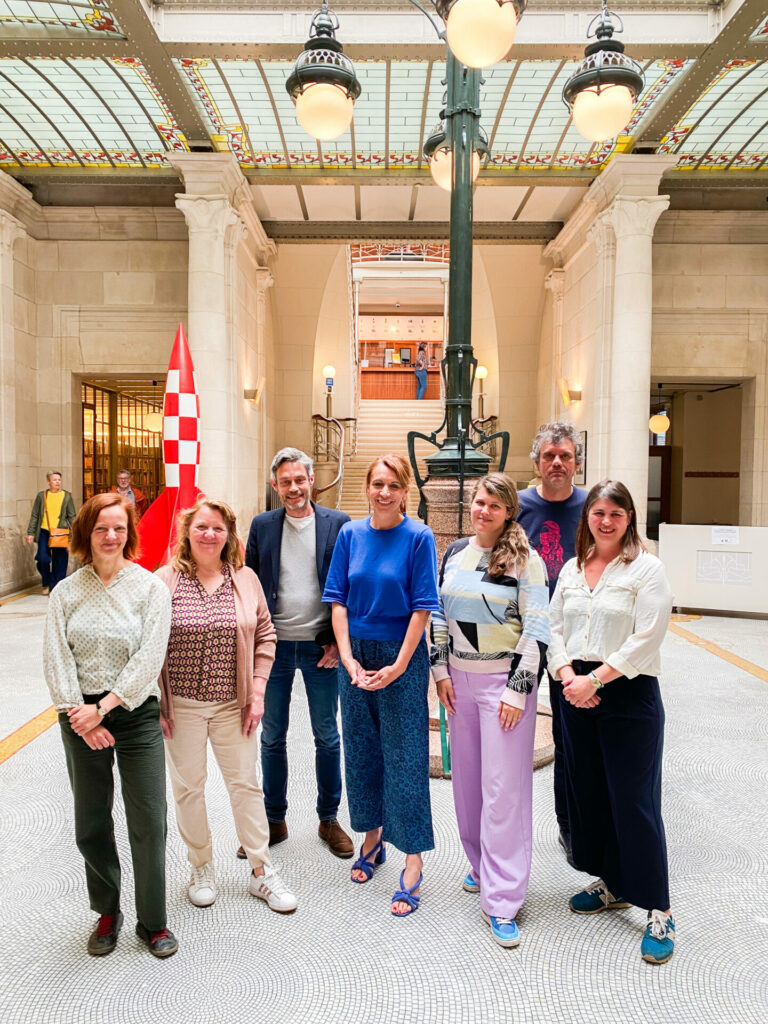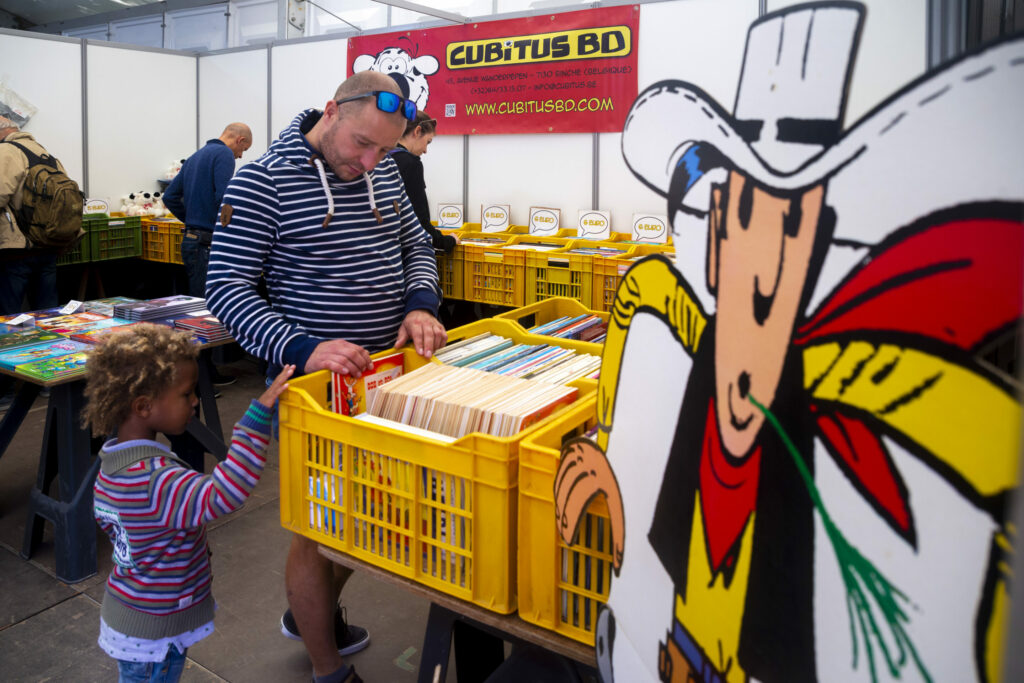After speculoos, nightlife, the procession of the Ommegang or the tradition of rod puppets, the 'comic strip art’ will now be included in the intangible cultural heritage of the Brussels-Capital Region, announced Brussels State Secretary for Heritage Ans Persoons.
The Capital Region's recognition of comic strips as intangible cultural heritage is supported by the Brussels Comic Museum and a large community including authors, publishers, booksellers, librarians and readers – making Brussels the first region in Belgium to recognise it.
"The comic strip – the ninth art – is without doubt one of the most important symbols of Brussels and its identity. Comic art is omnipresent in our city. From street names to statues, from a trail of murals to museums and festivals, you come across the comic strip everywhere," Persoons said.
"Everyone loves it and it is even taught at university. Comic book art is a real Brussels speciality, now finally recognised as intangible cultural heritage of our region. This is proof that comic books have an important place in our city," she added.
Important medium
In 2029, on the occasion of the 100th anniversary of Hergé's first Tintin comic strip, Persoons hopes that Brussels will be able to honour this art and obtain the title of UNESCO intangible cultural heritage.
In Belgium, and especially Brussels, comic book art has been practised for almost 200 years, with one of the earliest examples being Le Déluge à Bruxelles by Richard de Querelles (1843). But it was Hergé, the creator of Tintin, who in 1929 really opened a door for the development of comics in our country.
By 2020, comics were the second most popular publication type in Wallonia and the Francophone part of Brussels (Wallonia-Brussels Federation), and the most important medium economically.
As for Dutch-language comics, the largest publisher (Standaard Uitgeverij) published about 80 original creations in Dutch and 125 translations from French into Dutch. The print runs of the original works are between 25,000 and 70,000 copies.

Credit: Office of Ans Persoons
Among Dutch-language comic publishers, the print runs of family comics such as De Kiekeboes, FC de Kampioenen, Suske & Wiske and Jommeke are the largest. Translations have a circulation of 5,000 to 25,000 copies, graphic novels have a circulation of 1,000 to 3,000 copies.
Culturally, the Brussels-Capital Region boasts an abundance of museums, exhibitions and festivities, as well as a veritable comic strip trail that is an integral part of the Brussels landscape. Over 70 murals can be found in the city centre, with some also in the suburbs. The importance of the Belgian strip is particularly remarkable in light of the country's modest size and relatively small population.
While comic book lovers and readers are internationally dispersed, some of the biggest names in the scene come from Brussels, such as André Franquin, Peyo, François Schuiten and Johan de Moor. Brussels readers are all steeped in comic book culture from an early age, thanks to their family and school upbringing, the Brussels book market and the cultural offerings surrounding comics.
Essential task
Currently, numerous professionals play an important role in the dissemination of comics and are spread throughout the Capital Region: Brussels has nearly 30 bookshops specialising in comics and more than a dozen comics publishers.
"It quickly became clear that it was an obvious and essential task for the Comic Museum. This is a sector we are privileged to represent on a daily basis to support this initiative to include comics in the intangible cultural heritage of the Brussels Capital Region," said Isabelle Debekker, director of the Brussels Comic Museum.
These various historical elements have contributed to a favourable ecosystem for comic books in Brussels, making the city a recognised centre for the creation, publication, promotion and appreciation of this visual art.
Related News
- Brussels Renaissance Festival transports city back to 16th century
- Belgium's quirky traditions: Singing contests for finches
- Brussels applies for UNESCO recognition of two iconic traditions
"Comics have a long history in Brussels. They emerged from a group of extremely dynamic people before and after the war, a blessed period for Belgian comics, with a thriving group of authors and publishers who possessed imagination and created a movement with rare vigour, which I think may have led to us having a confluence of planets at that time that was almost unique in the world," said Brussels author François Schuiten.
"And then, of course, times change, comics become very global, creativity moves, but there remains a deep-rooted attachment in Brussels to this imaginary world of comics and in a period that is still very fragile for authors," he said. "It is important to protect this history, this wealth and this heritage."

